10/08/2022
In 2016, 13.5% of companies in Spain had medium or high sophistication cloud computing services. Four years later, in 2020, the percentage had almost doubled to 25.6%, according to Eurostat. Today, demand for cloud solutions continues to grow at over 20% per year, making the cloud a critical piece of post-COVID recovery and resiliency.
In this context, the cloud market in Spain is taking positions. On the one hand, the roadmaps and growth strategies of the so-called “hyperscalars” stand out. In addition, more and more service integrators have extensive certification and competency programs with these companies, and finally, more infrastructure-oriented companies are offering their cloud IaaS services to customers who opt for an operational approach to the cloud.
The COVID-19 crisis has positioned cloud services, service integrators and by extension the IT areas of organizations as high-value elements to ensure resilience and speed of response and adaptation for business continuity. This is one of the main conclusions of the latest ‘Market Trends Cloud 2022′ prepared by Penteo, which analyzes the demand for services of this line of business in Spain.

Market trends
Penteo’s study provides us with 5 keys to understand the development of the sector in the coming months:
1. Client companies behave differently depending on the cloud strategies they adopt. Penteo notes that, in many cases, companies are opting for multi-cloud and hybrid models, supported by complex infrastructure environments. That’s why FinOps services and platforms are offered as part of most vendors’ portfolios to give visibility into cloud spending and understand where they are getting the most value from their IT investments.
There is also some reluctance to move critical workloads to the public cloud, mainly for security and control reasons.
Meanwhile, edge computing, or computing at the edge, is emerging as the next element to complete the puzzle of hybrid cloud strategies. With the latest improvements in networking and connectivity technology, cloud providers will extend their networks to the edge and therefore partnerships with telecommunications providers, content delivery network (CDN) providers or even small data center provisioning will become increasingly relevant.
4. Companies that dedicate a higher percentage of their budget to the cloud do so in SaaS, while companies that dedicate a smaller proportion do so in IaaS, precisely in search of reducing the direct cost to try to be more economically efficient. In any case, according to Penteo, companies spend a significant portion of their time activating and deactivating servers or licenses and users to avoid overspending.
5. Finally, aspects such as energy optimization and decarbonization that can be obtained with the use of cloud services will continue to be required by customers mainly in the corporate segment or in sectors such as utilities. Not surprisingly, it is identified as one of the key elements for cloud providers in their strategy.










